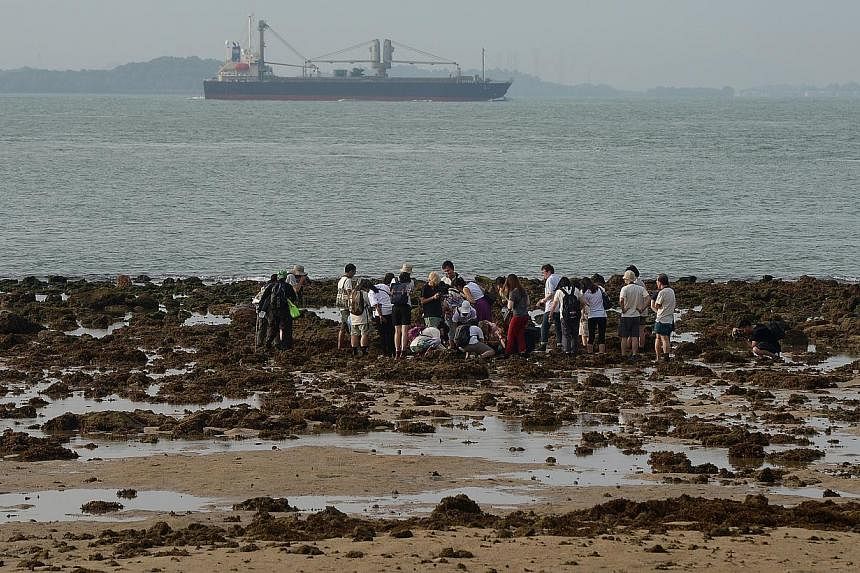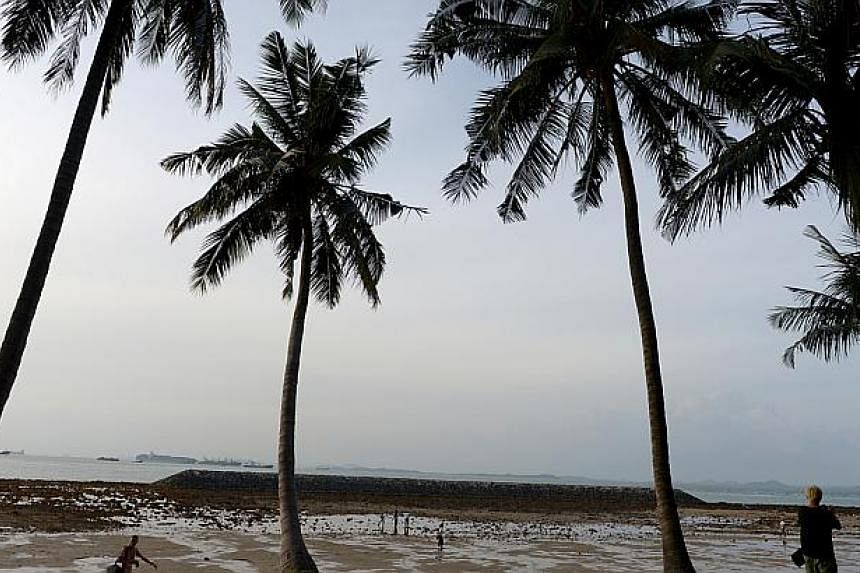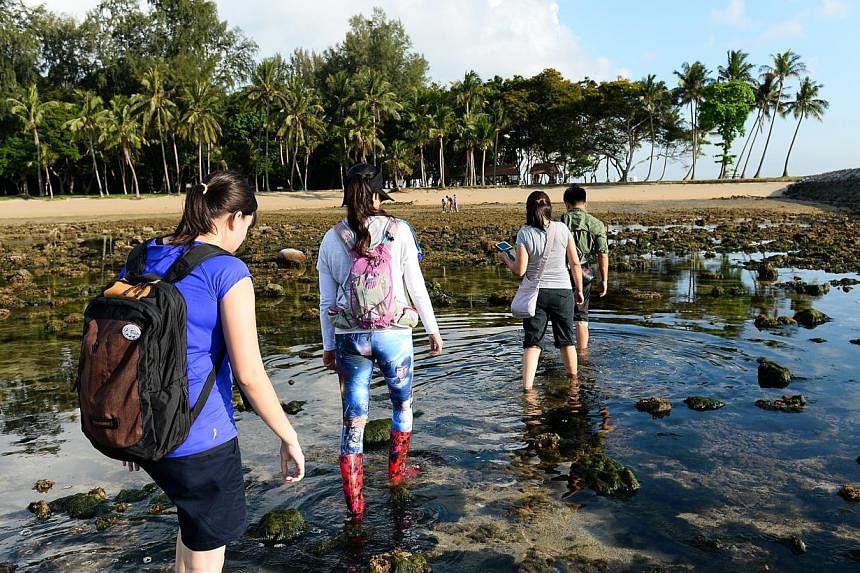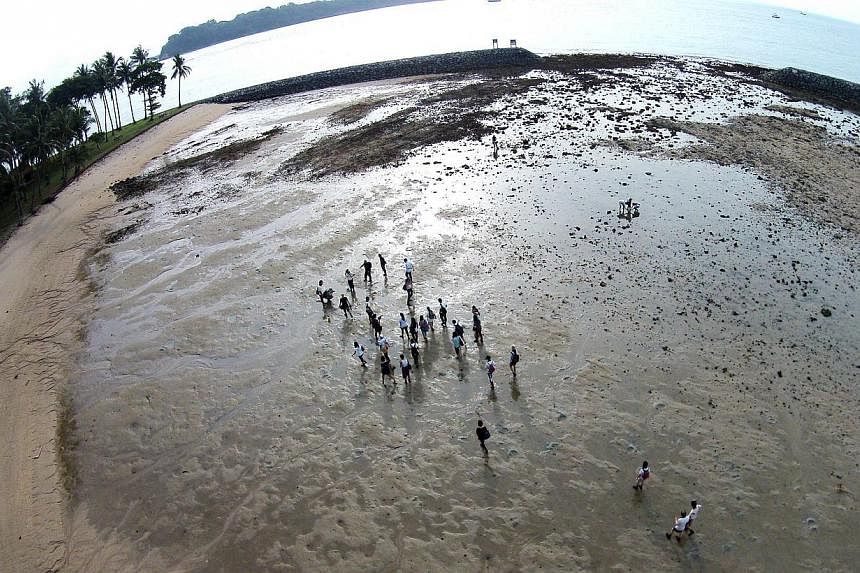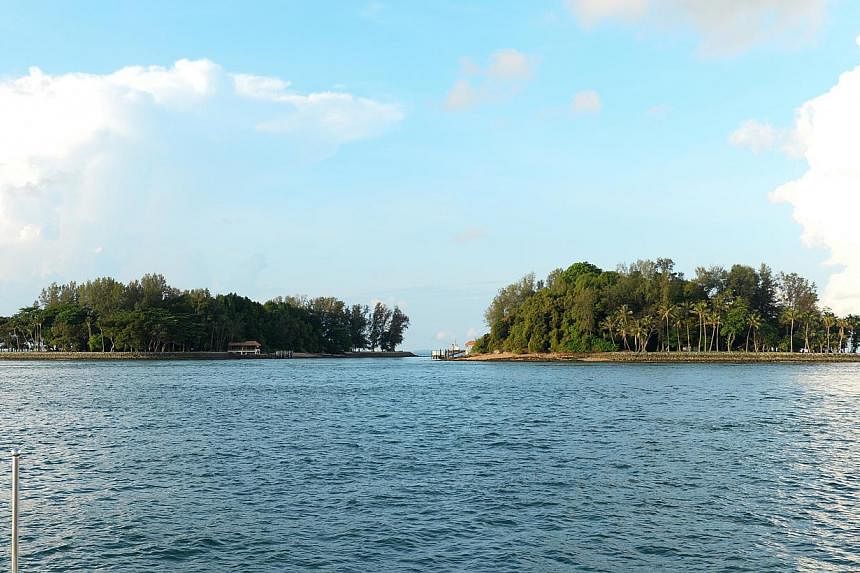This story was first published on July 15, 2014, and updated on July 16, 2015.
Singapore's southern Sisters' Islands, together with its surrounding waters, has been designated as the first ever marine park in the nation's history.
A new Sisters' Islands Marine Park Public Gallery, on St John's Island, was opened by President Tony Tan Keng Yam on July 15, 2015.
The 30 sq m gallery showcases the biodiversity in Singapore waters, particularly its first marine park. It features a diorama of the marine life that visitors can expect to encounter on the two dive trails there which will open in September 2015, including rare sponges as well as other species such as sea stars and nudibranchs.
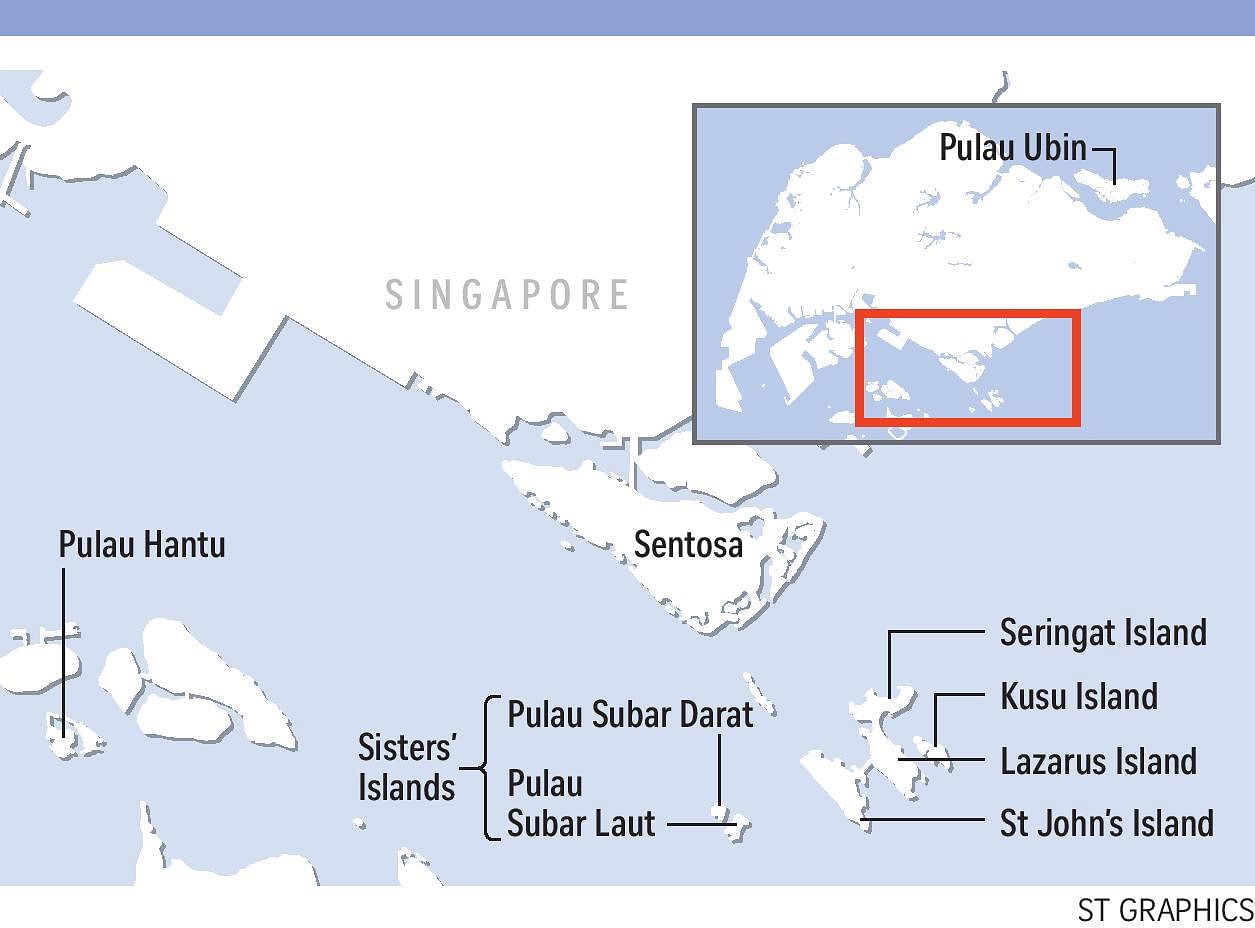
Here are some things you might be curious to know about Sister's Islands:
1. The Legend
A very long time ago, there were two sisters named Minah and Lina, who were inseparable.
One day, a pirate came along and sought younger sister Lina's hand in marriage, but she rejected him as she did not want to be away from Minah. The pirate then kidnapped Lina and brought her onto his boat.
In a desperate attempt to save her younger sister, Minah jumped into the water and swam after the boat, but soon started drowning. Upon seeing this, Lina freed herself from the pirate and jumped into the water to save her sister. But a large wave engulfed them and everyone died.
When the storm subsided, the sisters were gone, but two islands emerged at the spot they had perished.
Big Sister's Island, also known as Pulau Subar Laut (3.9ha), and Little Sister's Island, otherwise known as Pulau Subar Darat (1.7ha), are now collectively called the Sisters' Islands.
It is said that every year on the day the islands were formed, there would be heavy rain and thunderstorms.
2. The marine park
The 40ha park, the size of about 50 football fields, will include the western reefs and seashore areas of nearby Pulau Tekukor, a former ammunition dump, and St John's Island, currently home to research and recreational facilities.
The intertidal area at the marine park is most suitable for visitors during low tides of 0.4 metres and below. That is when you will be able to see all the marine life which are otherwise underwater and out of sight.
Guided walks are conducted free of charge. Each session had been capped at a maximum of 15 people, but raised to 45 upon high demand.
These trips are opened for public registration in phases at www.nparks.gov.sg/sistersislandsmarinepark. Registration is on a first-come, first-served basis.
The Sisters' Islands Marine Park will protect Singapore's coral reefs, which support an ecosystem consisting of rare species of seahorses, clams and other marine life.
Notably, over 250 species of hard corals can be found in Singapore's waters, 32 per cent of the global total.
NParks will conduct studies to work out how many people currently visit the islands, how many the area can handle, and which areas are safest to walk in. It will also install stepping-stones or boardwalks to give public access while protecting delicate areas.
3. Getting there
For those who signed up with the NParks tours, transport to and from the islands will be provided.
For others, Singapore Island Cruise provides a private charter service from Marina South Pier to the Sisters' Islands.
A two-way trip would cost $400 for a boat that can sit up to 12 people, for one day. An average boat ride to the island takes 40 minutes.
Once there, you can swim and snorkel around the lagoons and reefs.
Camping is also possible, but do remember to apply for a permit.
While having a picnic at the Sisters' Islands, do not share your food with the local long-tailed macaques. These monkeys can be aggressive. Do not leave food unattended, and clear all rubbish properly into the monkey-proof bins provided.
4. A safe haven
Located close to one of the world's busiest ports, the marine park will provide a refuge for the vast marine wildlife around the Sisters' Islands and its surrounding waters.
One of the research projects planned at the new park is the reintroduction of giant clams, which are endangered in Singapore.
On Tuesday, Dr Neo Mei Lin, 28, a research fellow at the Tropical Marine Science Institute, planted a lab-grown giant clam underwater off Big Sister's Island.
The area has all along been rich in marine life.
In 2011, for instance, the Neptune's Cup sponge, long thought to be extinct, was rediscovered off St John's Island.
5. Success of the Blue Plan
In 2009, civil society groups had presented a Blue Plan. It was the most comprehensive proposal yet to save Singapore's coral reefs, and called for the Government to formally designate high-biodiversity areas. Among them were Sisters' Islands and the southern islands.
The marine conservation Blue Plan, over a year in the making, was compiled by a team of academics, environmental organisations and civil society groups.
Calls to save Singapore's reefs date back to the 1980s and 1990s, and the Blue Plan was one in a long line of proposals.
